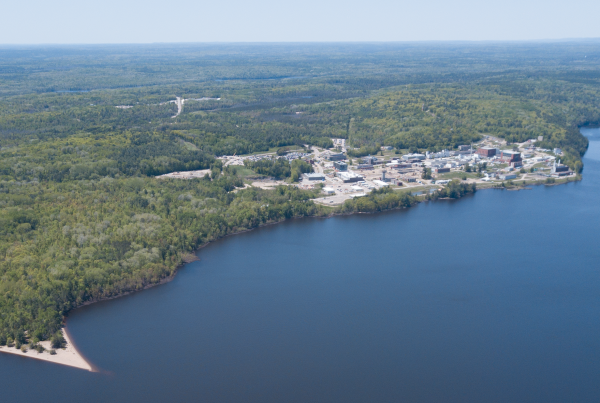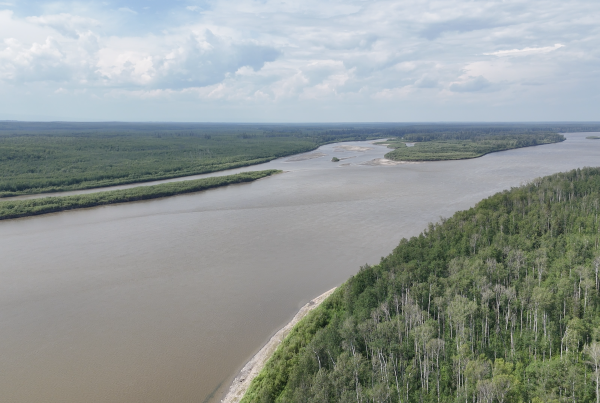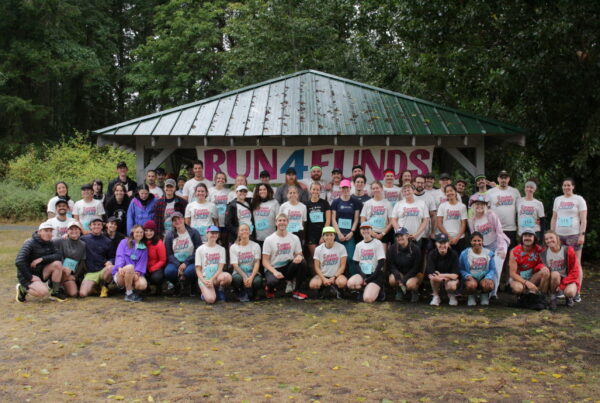Post submitted by Rachel Ivey, graduate in Environmental Science McGill University
Have you heard about the Constitution Express?
While the building of the trans-Canada railways marked Canada’s establishment as a colonial nation, another cross-country odyssey marked the beginning of a sophisticated new Indigenous legal era.
Today, thanks to the historic Indigenous rights mobilization efforts of the Constitution Express that championed Section 35, Canada’s Constitution recognizes and affirms Indigenous rights. RAVEN can support Indigenous-led legal challenges with powerful potential to set legal precedents and protect lands and waters for generations to come because a visionary group of legal scholars, activists and Indigenous politicians advocated for a constitutional amendment that, to this day, enshrines some of the most powerful rights in the world to Indigenous nations in this country.
Let’s take a look back in history to the story of Art Manuel and his family’s inspiring dedication to justice.
In 1951, two very important events occurred: the revision of the Indian Act and the birth of a future Indigenous rights leader, Arthur Manuel. Much of what Arthur Manuel would later achieve coincided with revision of the inhumane Indian Act.
After World War II, the atrocities committed against Indigenous Peoples in Canada stood in stark, shameful contrast with the sacrifice and contributions of Indigenous veterans. The recognition of the cruelty of policies against Indigenous People, along with Canada’s commitment to the UN Declaration of Human Rights (ratified in 1948), led to the revision of the Indian Act in 1951. Reversing assimilationist policies of previous colonial governments, the amended Act allowed Indigenous People to practice their culture, gave Indigenous women the right to vote in band councils and allowed for Indigenous people to to organize and hire legal counsel.
During this historic moment, George Manuel of the Secwepemc Nation and Marceline Paul of the Ktunaxa Nation brought their son, Arthur Manuel, into the world. George and then Art Manuel were of the Neskonlith band, who are one of the 17 bands part of the immense Secwepemc territory that covers approximately 180 000 square km in south central BC.
Art Manuel’s story is part of an intergenerational legacy in the ongoing fight for Indigenous rights. Arthur Manuel’s father, George Manuel, was Chief of Shuswap Nation for many years as well as President of the North American Indian Brotherhood of BC and the National Indian Brotherhood. George Manuel helped launch the World Council of Indigenous People and later proposed drafting an international declaration to uphold and protect the rights of Indigenous peoples worldwide — eventually leading to UNDRIP.
As President of the Union of BC Indian Chiefs, Manuel Sr. led thousands of supporters to Ottawa via the legendary Constitution Express, pressuring the government to include Indigenous rights in the provisions of the constitution, now known as Section 35 of the Constitution Act.
A penchant for justice and bold movement building ran in the family.
Young Arthur Manuel began advocating for justice while attending residential school. At age 16,he led a hunger strike in protest against the substandard food being served. In the early 70’s he became president of the Native Youth Association, where, together with fellow activists, he occupied the head offices of the Department of Indian Affairs in Ottawa.
Seeking to change the colonial system, Manuel went on to attend Concordia University and eventually Osgoode Hall Law School. With just one course left, Manuel left law school and returned to Neskonlith territory, but maintained a deep legal knowledge going forward in his career as an activist.
With the introduction of a new treaty process proposed by the provincial and federal government in the early 90s, First Nations of BC were faced with the threat of loss of Title to their traditional unceded territories. Dr. Mary Thomas, a well respected Neskonlith elder, urged Manuel to run for Neskonlith Band Chief to defend the community’s sovereignty and rights amidst the encroaching treaty process. Manuel won and served four terms as Band Chief and later served as chief of the Shuswap Nation Tribal Council.
One of his successful actions as chief included the protest of Sun Peaks, a ski resort on Neskonlith territory that would have encroached onto his people’s land. After elder Irene Billy was arrested in 2001, Manuel told the media, “You may be able to use your police to grab and handcuff our elders, land-users and youth and haul them away. But you will not be able to keep them away from our land. They will return and all our people will return.”
Manuel’s unwavering commitment to the land continued in his role as spokesperson for the Indigenous Network on Economies and Trade (INET), a network of Indigenous Nations that work at the international level to achieve recognition of Aboriginal title and rights.
Manuel advocated for the protection of forests by submitting reports to the World Trade Organization in 2003 and later was influential in shaping NAFTA following the highly disputed US countervail tax on Canadian softwood.
Engaging with the contentious US tax on Canadian softwood in 2003 was one of Manuel’s most impressive, strategic efforts championing for Indigenous rights. Canada attempted to dispute the tax to prove that the industry was not being subsidized; Manuel famously argued that the Canadian logging industry enjoyed a subsidy by the Indigenous Peoples whose right to the land and to the trees being harvested acted as a defacto industry subsidy.
The WTO reviewed his submission and agreed that in fact Indigenous People were subsidizing this controversial industry. Manuel followed up this success with a similar report to NAFTA; facing down an army of Canadian government lawyers hired to dispute his submission, Manuel won again.
In an interview with Democracy Now! Manuel explained,“Canada as a country has Aboriginal treaty rights that have been recognized by the courts and protected by the constitution, but they will not recognize it politically. [This] makes Indigenous People poor because our rights as Indigenous People are not recognized in decision making with regard to access and benefit sharing, or with regard to natural resources in this country.”
This work by Manuel remains crucial today as the fight continues to include Indigenous People in international agreements such as USMCA — the United States, Mexico and Canada Free Trade Agreement — that deeply affect Indigenous People in Canada and the rest of North America.
Manuel passed away in 2017 at the age of 66. He left behind a legacy of achievements, as well as his children Kanahus, Mayuk, Ska7cis, and Snutetkwe Manuel. His sister Ida, Kanahus, founder of Tiny House Warriors, and Mayuk are themselves strong activists and land defenders, carrying on the family tradition of fighting for the rights of their people and others.
Check out Art Manuel’s books Unsettling Canada, A national wake-up call and The Reconciliation Manifesto: Recovering land, rebuilding the economy co-written with Grand Chief Ronald Derrikson of West Bank First Nation to learn more from this incredible leader.
Art Manuel and the intergenerational legacy he carried forth has shaped the legal field in Canada and around the world. His brilliant, strategic use of law is a guiding light in informing how RAVEN supports Indigenous-led legal actions. We honour the legacy of champions like Art Manuel who, against all odds, uphold a long held vision to carry teachings from the past to support the well being of future generations.






